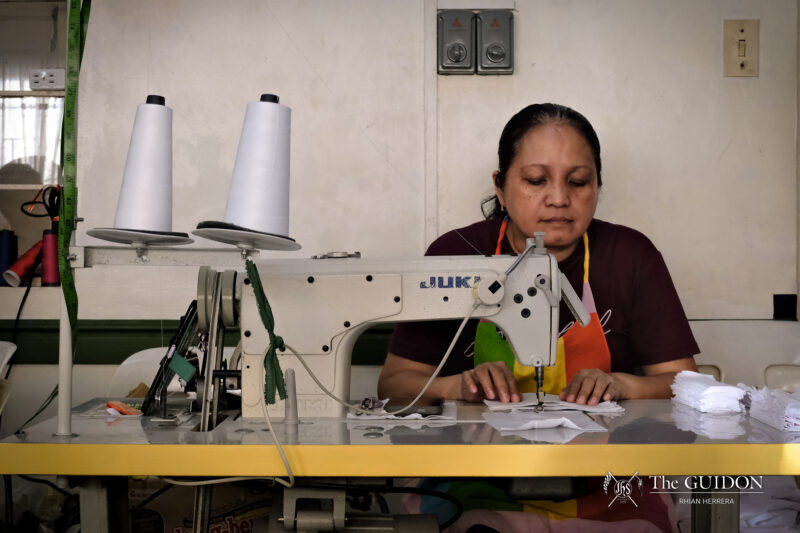SPACESHIPS ZOOMING through galaxies, rebels battling oppression in dystopian futures, and heroes traveling through time—these are familiar scenes to many. Along with the digital age phenomenon and continuous technological advances, the science fiction genre appears alive and thriving—that is, until we look locally.
While there is a considerably vast bank of local sci-fi short stories, the genre has yet to completely penetrate the Filipino film and novel industries. As foreign creators explore the limits of speculative fiction, long-form Philippine sci-fi remains to be largely uncharted territory in the sea of mainstream media. Nevertheless, more local creators in recent years have set their sails on a mission of introducing long-form Filipino sci-fi to local audiences.
Written in the stars
While the genre’s history in the country traces back to the 1940s, it was only until 2013 when the first modern Philippine sci-fi novel was published—Eliza Victoria’s Project 17.
Even on big screens, English Department professor Roy Tristan Agustin III notes that local sci-fi movies are drowned out by melodrama and are often passed to the niche audiences of microcinemas and film festivals. “Mas mainstream ‘yung romcom or kilig for movies (Romantic comedies and kilig movies are more mainstream),” Karen Perez (1 AB SOS), a sci-fi fan, adds.
Recently, more local sci-fi films have sprung up in festival circuits. For instance, Midnight in a Perfect World (2020) directed by Dodo Dayao was released through QCinema. While touted as a horror film, Dayao shares that he “diffused” the sci-fi elements and influences throughout the film, which made its political allegories more effective. “[Sci-fi] gives you a more clear-eyed and potent voice when it comes to making comments on whatever it is you want to comment on,” he explains.
With the ever-growing body of local sci-fi works since the 2000s, Agustin shares that more diverse narratives of the genre have started to surface as Filipino writers find a voice to write in. “We still run into the problem of, unfortunately, for the writers, readership, and for filmmakers, viewership,” he explains.
Running on fumes
Despite the consistent and creative efforts of local writers and filmmakers, sci-fi remains distant from the spotlight. According to Communication Department professor Gershom Chua, the shortage of local sci-fi may be attributed mainly to a lack of budget for production. “The industry is not keen on or excited about producing science fiction,” he explains. “As a business, they still want to make sure the risk is very low.”
Due to the lack of resources, Dayao notes that local sci-fi creators also face difficulty in keeping up with international productions. He adds that as a result, Filipinos tend to compare local films to what Western film industries produce.
Aside from the need for financing, long-form sci-fi also requires creators to dedicate an immense amount of time to finishing their craft. “Will you be able to take time away from earning your keep in order to finish a novel? A novel that will have a small print run, that will be consigned to the teeny-tiny Filipiniana shelf in a dusty corner of the bookstore?” Victoria says.
Moreover, sci-fi creators face a greater risk of not earning enough due to the preferences of local audiences. Agustin believes that Filipinos lack an appreciation for science itself, and this tends to reflect the general attitudes of audiences towards the subject matter of sci-fi.
Furthermore, Perez suggests that these attitudes towards science reflect in how the government treats science institutions. These are seen in Senator Cynthia Villar’s comments against agricultural research and the slashed 2021 budget for the Department of Science and Technology. “[These government statements] reveal popular attitudes in scientific thought and scientific development,” Chua adds, concluding that these attitudes reflect in audiences’ media consumption.
To further encourage sci-fi within the country, Agustin calls for an enhanced quality of science education. “For your average Filipino who may have not had as much exposure [to science], and therefore, as much appreciation, there really isn’t a chance for [science fiction] to grow,” he shares.
To infinity and beyond
Even with the obstacles faced by various science fiction creators, the hope for the genre is not lost. With empowering voices like Dayao and Victoria at the forefront of local sci-fi exploration, each story contributes to the depiction of our collective realities in alternate universes. “There [are] so many stories we can tell as Filipinos—I’d like to play a small part in representing our lived experience,” Victoria says.
As creators continue pioneering local sci-fi, audiences are encouraged to detract from their notions of the genre and give their works a try. It is in these crafted narratives where Filipino storytelling can be further explored. After all, one small step—in embracing the science fiction scene—can lead to a giant leap for Philippine media.







